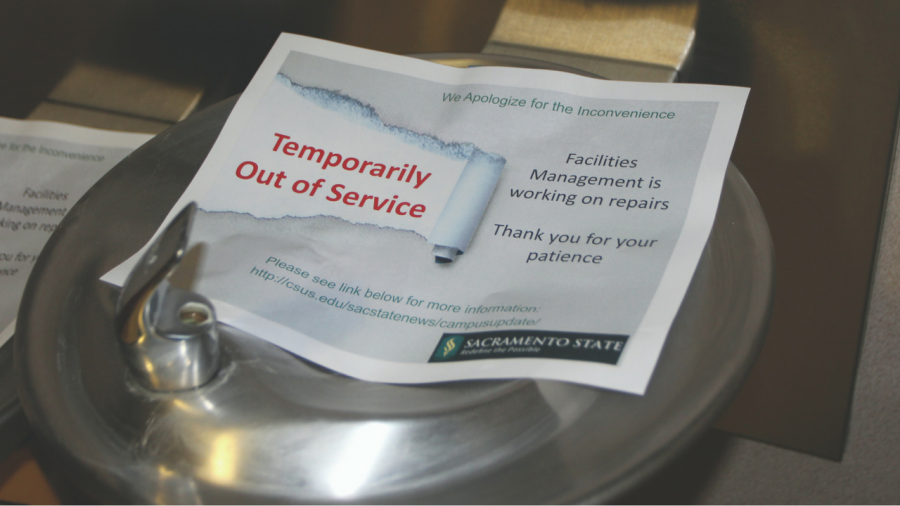Toxicology expert: Campus water still contaminated with lead
Kameron Schmid – The State Hornet
Sacramento State has released the results from its comprehensive test of its drinking water sources for lead contamination. 43 sources, around five percent, were found to be above the EPA action level of 15 parts per billion.
September 5, 2017
(Go to StateHornet.com/SSLead for more information)
The issue of Sacramento State’s drinking water containing dangerous amounts of lead continues, as work done over the summer by a campus research group has yielded illuminating results.
Jeffery Foran, department chair and professor of environmental studies at Sac State, along with other faculty and students from the department, took more than 300 water samples from 10 total fountains over the summer, and found lead contamination over the EPA level in three of those fountains.
As a result of this and previous testing results, Foran says he has repeatedly recommended to the Sac State president’s office that all drinking water sources be shut off, and replaced by completely filtered sources at high-volume areas on campus.
This comes one year after the same group headed by Foran did a test of campus drinking water resources and found high amounts of lead contamination in the summer of 2016 and January of 2017.
Sac State spent all of the spring semester following the January testing hiring an outside consultant group, Certified Industrial Hygienist Services, to conduct its own tests of all campus drinking water sources, and making plans to remediate all drinking water sources found over the EPA action level of 15 parts per billion.
According to an email from Gary Rosenblum, Sac State’s new chief risk officer, all sources found above the EPA level and remediated over the summer were retested and found to be under the EPA level. This includes the three fountains found over the EPA level in Foran’s testing.
Foran and his group retested this summer partly because he was not convinced by the results from CIH’s testing, mainly because of the methods used in those and his group’s previous work.
“(Those tests) were all designed to determine whether there is any lead in water when you first take the water out of the fountain or tap,” Foran said, referring to “first draw” samples.
The problem with first draw samples though, according to Foran, is that they do not accurately reflect what concentrations of lead may be in water sources after they have been used for a period of time, like any normal day of school.
This theory was tested this summer, as Foran’s group took over 300 samples from 10 fountains meant to measure the variability in lead contamination over periods of time.
Three out of 10 fountains had concentrations over 15 ppb, well over the “5 or 6 percent” of fountains that Foran said both he and CIH found in their cumulative first draw samples.
“If the lead is coming from the fixtures of the fountain itself, which is often the case, then you might expect to see lead in the samples immediately upon that first draw,” Foran said. “But if lead is coming from the pipes back in the system, then you might not expect to see lead in the first draw if the fountain’s been run.”
Foran said he and his group shared this with the administration, including both risk management and Sac State president Robert Nelsen.
The university’s foremost expert on toxicology thinks his suggestion of shutting off all fountains won’t be considered because of a misguided adherence to first draw tests, the EPA action level and a lack of funds to fix all fountains and sinks on campus.
“One doesn’t have to take care of all the fountains on campus, one can shut them off and use bottle filling stations with filters, which would solve the problem in a much lower cost,” Foran said.
“Why there’s not an interest in that solution, I don’t know.”






























































































































Kevin corona • Sep 5, 2017 at 7:36 pm
If the outside group brought in already confirmed the fountains are at safe levels why are we still covering this story from one professor who had to retest his samples??? The idea of shutting down water fountains in this weather does not make a whole lot of sense and seems to be putting unnecessary fear in the sac state community.